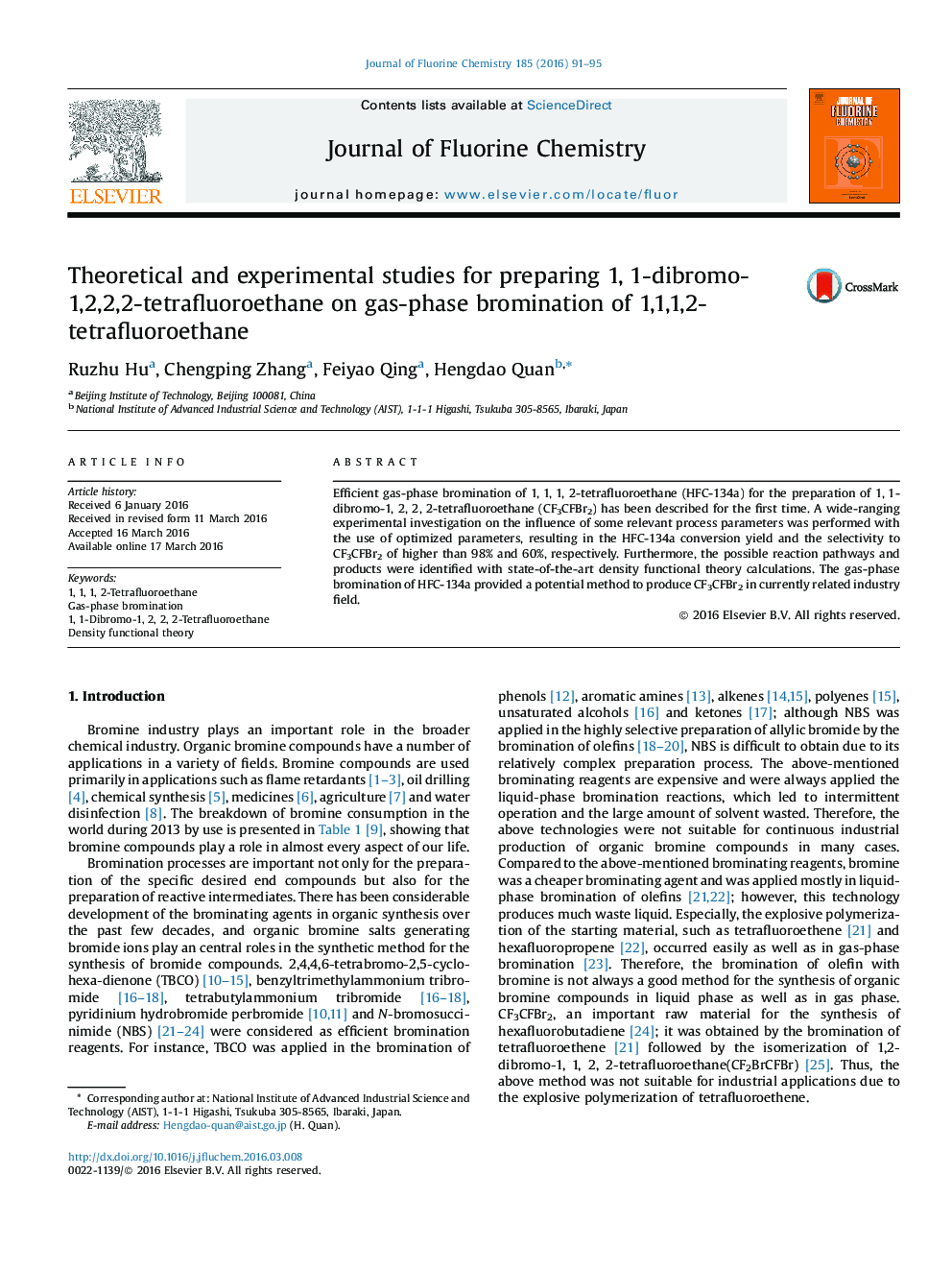| Article ID | Journal | Published Year | Pages | File Type |
|---|---|---|---|---|
| 1313478 | Journal of Fluorine Chemistry | 2016 | 5 Pages |
•1, 1-dibromotetrafluoroethane was first synthesized from gas-phase bromination of HFC-134a comprehensively.•The impact of reaction conditions in gas-phase bromination of HFC-134a has been developed.•The possible reaction pathways were proposed and were verified using the density functional theory.•This process provided a potential method to prepare CF3CFBr2.
Efficient gas-phase bromination of 1, 1, 1, 2-tetrafluoroethane (HFC-134a) for the preparation of 1, 1-dibromo-1, 2, 2, 2-tetrafluoroethane (CF3CFBr2) has been described for the first time. A wide-ranging experimental investigation on the influence of some relevant process parameters was performed with the use of optimized parameters, resulting in the HFC-134a conversion yield and the selectivity to CF3CFBr2 of higher than 98% and 60%, respectively. Furthermore, the possible reaction pathways and products were identified with state-of-the-art density functional theory calculations. The gas-phase bromination of HFC-134a provided a potential method to produce CF3CFBr2 in currently related industry field.
Graphical abstract1,1-dibromotetrafluoroethane (CF3CFBr2) was synthesized by the gas-phase bromination reaction from 1,1,1,2-tetrafluoroethane (HFC-134a) with bromine under optimal reaction conditions as follows: 0.1 MPa, T = 550 °C, Br2/HFC-134a = 2:1, contact time = 15s.Figure optionsDownload full-size imageDownload as PowerPoint slide
